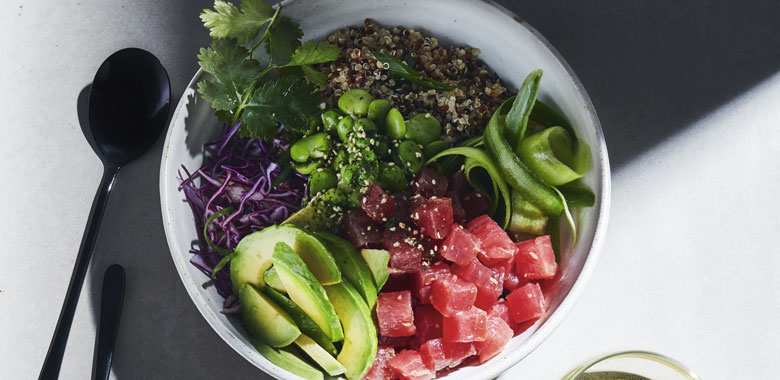
Food
Seasonal Salads by Lyndey Milan
Ignore the importance of salad leaves at your peril. They’ve been known to make or break many a meal.
I prefer to eat my salad as the French do, that is, after the main course, before the cheese, with my fingers. There is something entirely visceral about picking up the delicate leaves one by one, in appreciation of the careful attention that has come before. The metallic tines of a fork appear to me the quickest way to erode that joy.
With such simple pleasures, it is always a game of the finest details. Your choice first hangs on their freshness, as there is nothing more depressing than a bowl of wilting leaves. Once you have sought out the best-looking specimens at the market, you can start making more exciting decisions: are you looking for crunch or delicacy; bitterness, citrus or peppery notes; a creamy sauce or simple vinaigrette?
Remember, these leaves are often the vehicle for other flavours and, just as it is with wine, this is a game of matching weight for weight, in this case leaves to the dressing. The crisp form of cos and iceberg will hold up against a creamy sauce; while more delicate leaves and fresh herbs will make better friends with a gentle vinaigrette, something agrodolce with a balance of sweet and sharp; leaves from the chicory family (endive and radicchio) have an innate bitterness and pair well with an anchoïade or even blue cheese and nuts; while peppery rocket loves the salty bite of a little parmesan.
Once home, your leaves need a gentle touch – this is a task for a lover, not a warrior. Salad leaves must be diligently picked, carefully washed (and dried), and dressed at the very last minute, with just enough dressing to kiss the leaves, not drown them. It is only then you’ll have a salad worth its own place at the table!
Beyond the salad bowl, there is a bounty of beautiful leaves that love a little time in the frying pan. Cos, braised with the sweet spring peas and bacon is a favourite served with chicken; while endive can be cut in half and allowed to caramelise in a hot pan with a little butter and lemon juice, the cooking will help mellow the bitterness – it is brilliant with game.
Wilted greens can also take a starring role in a meal. All along the Mediterranean, the tradition of seeking the wild leaves and herbs that grow in the hills and quickly cooking them has led to beautiful pastas, egg dishes and pies. We have our very own, largely underrated, native spinach found in the sandy soil along the coastline known as warrigal greens. These leaves require blanching or light cooking to remove a poisonous compound (only dangerous in large quantities, but best avoided!). Once blanched, they have a delicate flavour and texture, and can be used in a wild weed pie or omelette to great success.
In a restaurant kitchen, working through the large boxes of leaves is often a task assigned to the apprentices. They must carefully check each leaf for damage and bugs before thoroughly washing them. It must be done each day and can take hours. I recall pointing out to a friend of mine, the head chef at one such kitchen, that this must become a little tiresome. He (correctly) chastised me, explaining that while the leaves may not seem exciting, one bruised leaf would show they didn’t care, one bug would ruin an entire meal, one grain of dirt would ruin the mouthful. The lesson is in the detail, as is the reward.
Select and store
Seek out beautiful, fresh salad leaves. Pick through them carefully before washing them in cold water – a little soak will also help to revive tired leaves. A salad spinner is an important friend here, as moisture will repel oil. An alternative is to lay the leaves out on a dry tea-towel and pat them dry.
Salad leaves love
Extra virgin olive oil, vinegar, onion, cream, cheese, nuts, honey, garlic, mustard, salt, pepper, lemon, herbs, radish, egg.
Great salad recipes to try by Lyndey Milan:
Tuna and quinoa poke bowl
Crisp pork belly with Asian salad
Burrata spring salad
Spiced chicken with blood orange and date salad